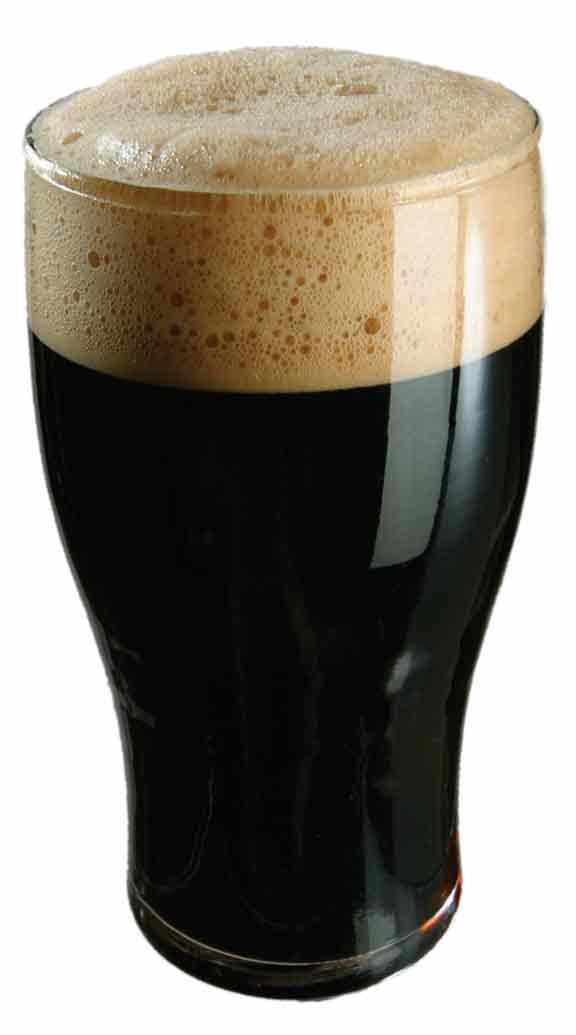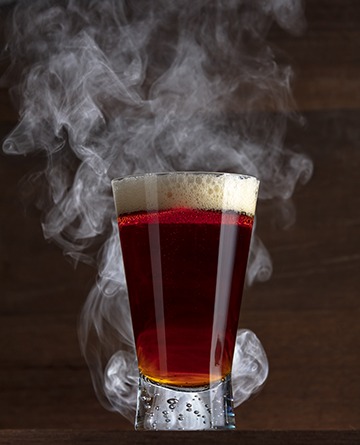Gruit
A medieval unhopped ale

Most people have heard of gruit, but only to the point where it is described as some kind of beer that doesn’t use hops for bitterness and has flavorings from a mix of wild herbs and spices. In modern times, it is almost synonymous with unhopped beer, but that isn’t quite accurate either. Gruit is actually quite a bit more specific as it is tied to both a specific region (northwest continental Europe) and timeframe (first half of the second millennium).
Gruit was an early example of how excise taxation was applied to alcohol and how trade secrets were used to protect an industry. Gruit itself was the mixture of herbs used in brewing and what was actually taxed. Since the composition of the gruit was a trade secret, it had to be purchased — and this is where the tax was collected. The economic angle to gruit is often ignored, but it is intertwined.
Given the secretive nature of the gruit and the long time when it was being produced, there are few definitive records that can be used to describe the actual beer. As brewing technology and ingredients were also relatively immature at the time, attempting to recreate that beer is a job best left to historians. I think modern interpretations can be made that have the spirit of the original beer without being an outright attempt to reproduce the original. I have seen a similar approach in Finland with sahti and South America with chicha, and it is a good pattern to follow when updating historical indigenous beers.
Gruit is not a defined style in either the Beer Judge Certification Program (BJCP) or the Brewers Association style guidelines. The appropriate place for such as beer in both systems is Historical Beer category (BJCP style category 27), with the inclusion of a detailed description of the beer so judges can understand the brewer’s intent.
Gruit’s History
In researching gruit, I found few sources in English that could give an authoritative explanation. The most frequently quoted book, Sacred and Herbal Healing Beers by Stephen Buhner, seemed more interested in the psychotropic and inebriating effects than the composition of the beer. Beer in the Middle Ages and the Renaissance by Richard Unger included some background on the regulatory and taxation aspects. Then I found some technical papers (“The Rise and Fall of Gruit,” “Gruit Ale,” and “Reconstructing Medieval Gruit Beer”) written by researcher Susan Verberg, who consulted some primary Dutch sources in her quest to understand gruit. I highly recommend searching for her papers as they are quite informative and contradict some earlier writings by others.
Gruit was developed in the Low Countries (Flanders, the Netherlands, parts of western Germany) sometime after the Roman Empire fell (476), certainly by the 800s when Charlemagne ruled the Carolingian dynasty. It fell out of favor somewhere between the 1400s and 1600s, as hopped beers began to become more prominent. So, it is definitely a beer associated with the Middle Ages — the time between the fall of the Roman Empire and the Renaissance and Age of Discovery.
Given the secretive nature of the gruit and the long time when it was being produced, there are few definitive records that can be used to describe the actual beer.
In the Middle Ages, states controlled the gruit but not brewing. So, governments were taxing the right to use gruit in beer. Just to be clear, medieval gruit could be the herbal mixture, the finished beverage, or the monopoly right to sell the ingredients, as well as the modern concept of an herbal beer without hops. In early times of making gruit ale, the gruit mixture could include the grain as well, although this later was changed to just the herbs.
Please don’t try to tie the decline of gruit to the introduction of the Reinheitsgebot. Gruit was not made in Bavaria and it was in decline long before 1516. Hopped beer was easier to produce, kept better, and did not require paying extra taxes.
Unhopped, spiced beer was also made in other locations like England, Scotland, and Scandinavia, but this was not gruit — these beers had a different tradition (one example is Fraoch heather ale). Only in modern times do we attempt to lump these different beers together. Also recall that hopped beer and unhopped ale coexisted in England around the time of the decline of gruit. Hopped beer came to England from the Dutch, which is where gruit would have been most popular.
My summary of gruit is to think of it as an herbal ale from the Middle Ages in the pre-industrial times in the area around the Low Countries of Europe. It often used a different blend of herbs and spices depending on the city, but the composition and sale of the herbal mix was a highly regulated monopoly beyond the control of the brewer. It is a specific type of beer, not a generic name for an unhopped beer. Modern versions can re-interpret the style with current technology and ingredients, but these are not actual re-creations of the historical drinks.
Sensory Profile
For this profile, I am relying primarily on the Brewers Association (BA) guidelines for koyt (listed as Dutch-style kuit, kuyt, or koyt), which I know was researched and submitted to the BA by Dutch judges and brewers. The herbal aspect of gruit is in addition to this base beer. Since gruit was made for a long time, the way it was made certainly changed, so a broad range of potential interpretations is possible.
Koyt has a predominantly grainy-bready flavor and aroma, with at most a moderate body. The color can be golden to copper, the dark colors coming from a longer boil. Perceived bitterness is medium-low to moderate, but the bitterness is not coming from hops in a gruit. Likewise, the low aroma is also coming from herbs, not hops. The fermentation profile can have a light fruitiness but should otherwise be clean. The strength can be average to strong, in the 4–8% ABV range. The beer can be hazy or cloudy. Even though a primitive beer, it should not have sourness.
The herbal character and bitterness will depend on what botanicals are used in the recipe, obviously. There could have been times when both hops and a botanical gruit mixture were used together, since hops began to be used as early as the 1200s. Earlier versions would not have used hops, but there is not much information available from those times. Books and printed records would not be common since the printing press wasn’t invented until the 1400s.
One of the typical ingredients in gruit, bog myrtle (Miricia gale) is known to have a bitter, astringent flavor, and likely is what is being used in the bittering hop role. Other herbs could vary by region, city, or time period — Verberg identifies at least 11 different herbs and spices that had been used in various locations. However, most mixtures seem to have used between three and five ingredients. She identifies bog myrtle or marsh rosemary (Ledum palustre) as necessary, with laurel berries (Laurus nobilis, but not the bay leaves) and laserwort (Laserpitium siler) being most common. She also mentions resin frequently; this is likely pine resin that was boiled and clarified to release volatile turpentine gasses.
Sacred and Herbal Healing Beers says that gruit contained bog myrtle, wild rosemary, and yarrow, but Verberg convincingly explains how this is erroneous. Various modern herbs and spices such as juniper berries, ginger, caraway seed, aniseed, nutmeg, cinnamon, cumin seed, and the like are also less convincing, although they may sometimes be able to simulate the character of other more traditional, less common ingredients.
Brewing Ingredients and Methods
Recreating gruit involves adapting something better known from the approximate time and place when gruit was made, in this case koyt from the Netherlands. Gruit existed many hundreds of years before koyt (which was made from approximately 1400–1550), but it’s plausible that gruit herbs were used in a koyt-like beer during the time they did overlap.
In the pre-industrial era, mashing was an approximation at best. Boiling the mash for long periods, like a cooking process, was sometimes done, as were multiple mashes. Mashing and boiling could take place in the same vessel. The grist of koyt consisted of a mixture of malted oats, wheat, and barley, with oats constituting at least half the grain bill. Older versions of gruit probably contained mostly oats, with added wheat only. A modern approach would be to use a koyt-like grist, but with modern mashing techniques like either a single infusion mash or a step mash.
Selecting the gruit component is the hardest step. Use a bittering ingredient, either bog myrtle (sometimes called sweet gale) or marsh rosemary, but not both together since they historically were not found in the same area. Then select flavorings to add — as described in the Sensory Profile section. Sourcing these products can be difficult. Searching homeopathic product suppliers, health food stores, herbal tea companies, or seed companies might work, but some of these plants may need to be cultivated. When using wild or unusual plant-based products, take care to understand that you are using non-poisonous materials. Check packaging and labeling, or consult with local agricultural experts before using unknown (especially foraged) ingredients.
For those who are unable to procure traditional herbal ingredients, one alternative is to make the modern interpretation of gruit, which is to simply treat it as an unhopped, spiced beer. Simply select aromatic and bitter herbs and spices to season the beer. Note that the resulting product might not be as microbiologically stable as typical beer, so you may want to include a light dosage of low-alpha or aged hops similar to what is done when making lambic.
Homebrew Example
This is a difficult beer to make since it involves sourcing a lot of unusual ingredients. The base grains should be relatively easy to find, although note that it requires malted oats not flaked oats. I’m going the koyt route for the base. When picking a pale ale malt, consider using one from the same general region as gruit. I selected a Belgian pale ale malt, for instance.
I like to use a step mash when working with non-barley cereal grains. Even though clarity should not be important in this style, I don’t want the beer itself to be overly heavy and thick. Note that koyt traditionally used a longer boil, which I’m using, and that should add some color. A shorter boil but using a decoction mash could also add color. None of these mash techniques are traditional for gruit, so any modern alternative is acceptable.
I’m selecting an ale yeast from the same general region, something like an altbier yeast. Other choices would be a Kölsch yeast, something called European ale, or possibly a Belgian strain. I worry about Belgian strains that are phenol-producers because of the interaction with herbs and spices. If I chose a Belgian strain, maybe something that would be used in a Belgian pale ale rather than a monastic-
type strain. If there was something that was more fruity than phenolic, that would also be a choice I would make.
I’m going to take some liberties with the herbs and spices because of what I am able to source. Sweet gale is pretty much required and is often found in homebrew shops (be careful, they can be old and stale). Laurel berries can be found online (Penn Herb Co. is one supplier I found).
Laserwort and resin are problematic to source, but laserwort is in the same family as caraway and anise. I’ll use some of those spices in its place. Alternatively, instead of anise, I might choose fennel, which has a similar licorice-like flavor. Historically, these were used in gruit from Cologne. Instead of resin, which I’d have to purify myself, I’ll use various evergreen products (juniper and spruce) that I’ve used before.
Balancing the bitterness and spices can be difficult due to unknown freshness and potency, so be prepared to make infusions (teas) to tweak the balance once the beer is finished. This is a step I often use when making spiced beers, so it’s part of my normal process. Think of it as tasting food and adjusting seasoning before serving, which is something any good cook would do.
Beers like these can be challenging to make and a very personal experience to drink – they are unusual and different, so not everyone will like them. You may wish to experiment with smaller batches or lower usage rates of herbs and spices until you determine your own personal preferences.
Gruit by the Numbers
OG: 1.050–1.080
FG: 1.006–1.015
SRM: 5–13
IBU: 0
ABV: 4.7–7.9%
Gruit

(5 gallons/19 L, all-grain)
OG = 1.058 FG = 1.015
IBU = 0 SRM = 4 ABV = 5.8%
Ingredients
6 lbs. (2.7 kg) oat malt
3.5 lbs. (1.6 kg) pale ale malt
2.5 lbs. (1.1 kg) wheat malt
1 qt. (0.95 L) juniper branches, small branches only
1 qt. (0.95 L) fresh spruce tips, new growth only (60 min.)
10 g sweet gale (0 min.)
10 laurel berries (0 min.)
1 oz. (28 g) juniper berries (0 min.)
10 g caraway seeds (0 min.)
Fennel fronds from 1 bulb (0 min.)
White Labs WLP011 (European Ale), Wyeast 1007 (German Ale), or SafAle K-97 yeast
3⁄4 cup corn sugar (for priming)
Step by Step
This recipe uses reverse osmosis (RO) water. Adjust all brewing water to a pH of 5.5 using phosphoric acid. Add 1 tsp. of calcium chloride to the mash.
This recipe uses a step mash. Use enough water to have a moderately thick mash (1.5 qts./lb. or 3.1 L/kg). Put the juniper branches in the bottom of the mash tun. Mash in the malts at 131 °F (55 °C) and hold for 15 minutes. Raise the temperature to 144 °F (62 °C) and hold for 30 minutes. Raise the temperature to 158 °F (70 °C) and hold for 15 minutes. Begin recirculating, then raise the mash temperature to 169 °F (76 °C), and recirculate for 15 minutes.
Sparge slowly and collect 8 gallons (30 L) of wort.
Boil the wort for 3 hours. Add the spruce tips with 60 minutes remaining in the boil. Add the remainder of the herbs and spices at the end of the boil, and steep for 10 minutes before removing.
Chill the wort to 64 °F (18 °C), pitch the yeast, and ferment at that temperature until complete.
Rack the beer, prime and bottle condition, or keg and force carbonate.
Gruit
(5 gallons/19 L, extract only)
OG = 1.058 FG = 1.015
IBU = 0 SRM = 4 ABV = 5.8%
If you are unable to source the oat malt extract, you can steep 0.5 lb. (230 g) Simpsons Golden Naked Oats® malt and swap out the extract for 3.5 lbs. (1.6 kg) pale ale liquid malt extract. Steep the grains while the water heats up to 158 °F (70 °C).
Ingredients
4 lbs. (1.8 kg) Muntons oat liquid malt extract
3.75 lbs. (1.7 kg) weizen dried malt extract
1 qt. (0.95 L) juniper branches, small branches only
1 qt. (0.95 L) fresh spruce tips, new growth only (60 min.)
10 g sweet gale (0 min.)
10 laurel berries (0 min.)
1 oz. (28 g) juniper berries (0 min.)
10 g caraway seeds (0 min.)
Fennel fronds from 1 bulb (0 min.)
White Labs WLP011 (European Ale), Wyeast 1007 (German Ale), or SafAle K-97 yeast
3⁄4 cup corn sugar (for priming)
Step by Step
Use 6.5 gallons (24.5 L) of water in the brew kettle; heat to 158 °F (70 °C). Turn off the heat. Add the malt extracts and stir thoroughly to dissolve completely. Add the juniper branches. Turn the heat back on and bring slowly to a boil, removing the juniper when the first bubbles from the boil appear.
Boil the wort for 3 hours. Add the spruce tips with 60 minutes remaining in the boil. Add the remainder of the herbs and spices at the end of the boil, and steep for 10 minutes before removing.
Chill the wort to 64 °F (18 °C), pitch the yeast, top up the fermenter to 5.25 gallons (20 L) and ferment until complete.
Rack the beer, prime and bottle condition, or keg and force carbonate.







